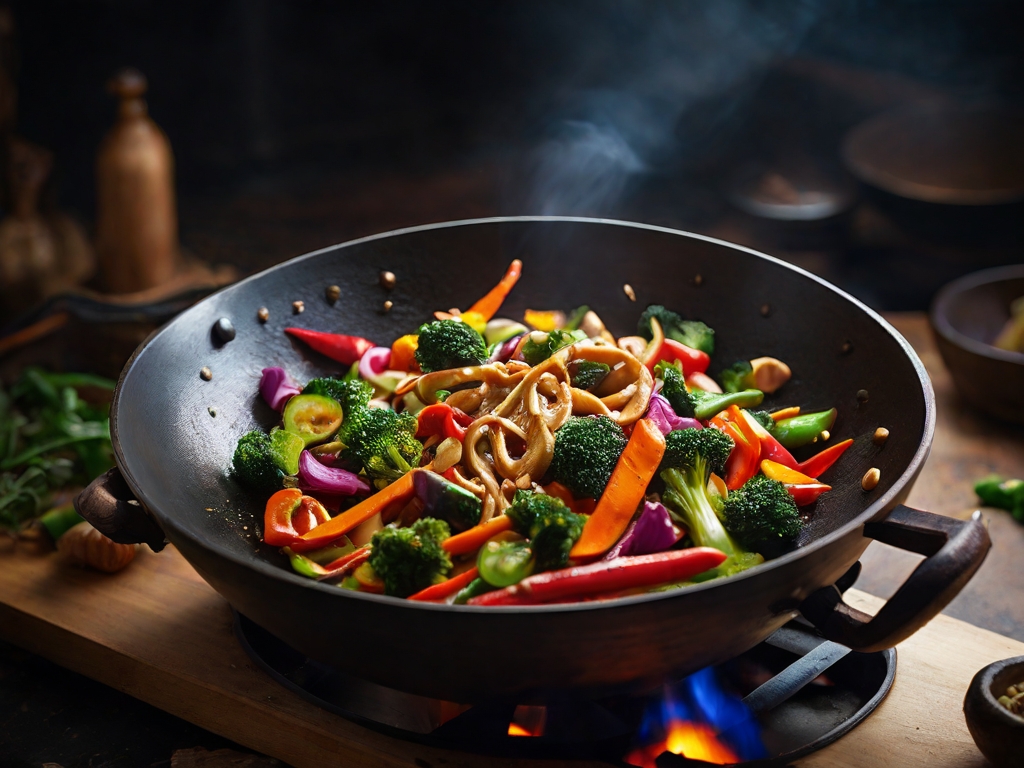Introduction: Unveiling the Secrets of Cooking Methods
In the vast universe of cuisine, cooking methods are the heart and soul of every dish. From gentle steaming to the intense heat of roasting, each culinary technique influences the flavor, texture, and presentation of our foods in unique and delicious ways. In this comprehensive guide, we will dive into the fascinating world of cooking methods, unraveling their secrets and providing you with everything you need to know to become a master of the kitchen.
Discover the Essence of Each Culinary Technique
Imagine the delicate fragrance emanating from a steamed dish, the seductive caramelization adorning a perfectly roasted steak, or the irresistible juiciness of a stew simmered slowly for hours. Each cooking method has its own story to tell and its own role to play in creating unforgettable culinary experiences.
Learn to Choose the Perfect Method for Each Ingredient
There is no one-size-fits-all approach when it comes to cooking methods; that’s why understanding the nuances of each cooking technique is crucial. From the delicacy required to steam fish to the robustness needed to roast a piece of meat, this guide will help you choose the perfect method to enhance the natural flavors of each ingredient.
Expert Tips and Tricks to Enhance Your Cooking Skills
Whether you’re an enthusiastic beginner or an experienced chef, there’s always more to discover in the world of cooking. Throughout this guide, I’ll share with you the tips and tricks I’ve learned over the years, from how to control grill temperature to vacuum sealing your ingredients for perfect sous vide cooking.
Get Ready for an Unforgettable Culinary Journey
Whether you’re looking to expand your culinary repertoire or simply want to hone your skills in the kitchen, this guide will take you on an unforgettable culinary journey. From classic techniques to innovative ones, I invite you to immerse yourself in the art of cooking and discover the joy of creating delicious, flavorful dishes for yourself and your loved ones.
Welcome to a world of unparalleled flavors, textures, and culinary experiences!
1. Steaming: Preserving Nutrients and Natural Flavors
Steaming is an ancient culinary technique that has stood the test of time, valued for its ability to preserve the nutrients and natural flavors of foods. In this section, we will explore in detail the benefits, necessary equipment, and practical tips for mastering this cooking technique.
Benefits of Steaming
Steaming is recognized as one of the healthiest ways to prepare food. By not submerging the food in boiling water, the loss of water-soluble nutrients like vitamins and minerals is minimized. Additionally, by not adding oils or fats during cooking, calorie and saturated fat intake are reduced, making it an ideal option for those seeking a balanced diet.
Equipment Needed for Steaming
To steam food effectively, you’ll need some basic items. A bamboo or metal steamer is a popular option for steaming in Asian cuisine, while a pot with a steaming insert may be more common in Western kitchens. Regardless of the type of steamer you choose, make sure to have a tight-fitting lid to retain steam and a rack or tray to place the food.
Practical Tips for Perfect Steaming
- Prepare foods evenly to ensure even cooking.
- Do not overcrowd the steamer; leave enough space between the foods to allow steam to circulate freely.
- Adjust the cooking time according to the type and size of the foods; tender vegetables will need less time than denser foods like potatoes.
- Add aromatics such as fresh herbs, lemon slices, or ginger to the steamer to impart additional flavors to the food.
- Once the food is cooked, remove it immediately from the steamer to prevent overcooking.
Explore Steaming Recipes and Variations
From fresh vegetables to delicate fish and Asian dumplings, there is a wide variety of foods that lend themselves perfectly to steaming. Explore new recipes and experiment with different ingredient combinations to discover new and exciting ways to enjoy this classic culinary technique.
2. Roasting and Baking: The Secrets to Intense Flavors and Perfect Textures
Roasting and baking are two cooking methods that have been used for centuries to create dishes with deep flavors and irresistible textures. In this section, we will explore these two culinary processes in depth, from the basics to the tips and tricks for achieving perfect results in every dish.
The Art of Roasting: Enhancing Flavors with Direct Heat
Roasting is a cooking method that involves exposing food to direct dry heat, whether on an outdoor grill, a hot skillet, or in an oven. This technique not only caramelizes the natural sugars in the food, intensifying its flavors, but also creates a crispy, golden-brown texture on the surface, adding an extra dimension of sensory pleasure to every bite.
Mastering the Art of Baking: Cooking with Indirect Heat
Baking, on the other hand, involves cooking food in a closed and controlled environment, where heat is evenly distributed around the food. This technique is perfect for cooking meats, poultry, fish, vegetables, and desserts, allowing flavors to develop slowly and textures to become soft and tender.
Tips for Perfect Roasting and Baking
- Properly prepare the food before roasting or baking it, seasoning and marinating it according to the recipe or your personal preferences.
- Adjust the oven or grill temperature according to the type of food you are cooking and the desired result.
- Use a pan to collect juices and fats that are released during cooking, allowing you to keep the food moist and juicy.
- Rotate the food halfway through the cooking time to ensure even cooking on all sides.
- Allow the food to rest after cooking to allow the juices to redistribute, resulting in more tender and juicy meats.
Explore Roasting and Baking Recipes and Variations
From a succulent grilled steak to a freshly baked fluffy cake, the possibilities of roasting and baking are endless. Experiment with different ingredients, seasonings, and cooking methods to discover new and exciting recipes that will delight your taste buds and satisfy your appetite for culinary adventure.
3. Grilling: Mastering the Art of Smoke and Flavor
Grilling is a culinary technique that has captivated people around the world for centuries. From its characteristic smoky flavor to the versatility it offers when cooking a wide range of foods, the grill is an indispensable element in any gastronome’s kitchen. In this section, we will delve into the exciting world of grilling, exploring its secrets, techniques, and tips so you can become a grill master in your own backyard.
Understanding the Fundamentals of Grilling
Grilling involves cooking food directly over an open heat source, whether charcoal, gas, or wood. This cooking technique provides intense, direct heat that caramelizes the food’s surface, creating deep flavors and a crispy exterior while maintaining juiciness inside. Understanding how to control temperature and cooking time is crucial to achieving perfect results on the grill.
Selecting the Right Grill Equipment
The type of grill you choose will have a significant impact on your final results. From traditional charcoal grills to modern gas or electric grills, each has its own advantages and challenges. Additionally, it’s important to consider the size and capacity of the grill, as well as additional accessories like meat thermometers and cleaning brushes to ensure a seamless grilling experience.
Tips for Improving Your Grilling Skills
- Properly prepare the grill before starting to cook, making sure it is clean and well lubricated to prevent food from sticking.
- Control the grill temperature by adjusting the amount of charcoal or gas, and learn to create direct and indirect heat zones for different cooking techniques.
- Choose the right cooking method for each type of food, whether direct grilling for thin cuts of meat or indirect grilling for larger cuts that require slower cooking.
- Use marinades, rubs, and sauces to add flavor to the food, and experiment with different wood chips or chunks to create unique smoky profiles.
Explore Grilling Recipes and Variations
From classic burgers and hot dogs to more elaborate dishes like smoked ribs and grilled seafood, there is a world of culinary possibilities waiting to be explored on the grill. Get creative with your ingredients and techniques, and don’t be afraid to experiment with new flavors and combinations to create unforgettable grilled masterpieces.
4. Slow Cooking: The Art of Patience in the Kitchen
Slow cooking is a culinary technique that demands patience and attention but rewards with dishes full of flavor and texture. In this section, we will delve deeply into the art of slow cooking, from the basics to tips and tricks for creating comforting dishes that melt in your mouth.
Understanding the Basics of Slow Cooking
Slow cooking involves cooking food at a low and steady temperature for an extended period. This method allows flavors to develop slowly, allowing ingredients to soften and meld, creating dishes with unparalleled depth of flavor. From stews and soups to meats and vegetables, slow cooking is perfect for a wide variety of recipes.
Selecting the Right Ingredients and Proper Preparation
To achieve the best results in slow cooking, it’s important to select the right ingredients and prepare them correctly. Meats that are more fibrous or tough, such as pork, lamb, or beef, are most suitable for this technique as they will tenderize and become more tender during prolonged cooking. Additionally, cutting ingredients into uniform pieces will ensure even cooking and consistent results.
Tips for Perfect Slow Cooking
- Use a slow cooker or crockpot for the best results, as they are designed to maintain a constant temperature for hours.
- Don’t fill the pot to the brim; leave enough space for the ingredients to move freely and to prevent overflow during cooking.
- Layer ingredients, starting with the hardest at the bottom and finishing with the softest on top, to ensure even cooking.
- Avoid lifting the lid of the pot during cooking, as this can affect the internal temperature and cooking time.
Exploring Recipes and Variations of Slow Cooking
From a comforting beef stew to a flavorful vegetarian chili, the possibilities of slow cooking are endless. Experiment with different ingredients, seasonings, and cooking times to create unique and delicious dishes that will delight your friends and family.
5. Stir-frying and Wok Stir-frying: The Magic of Quick and Fresh Flavors
Stir-frying and wok stir-frying are two versatile and exciting culinary techniques that originated in Asian cuisine and have gained popularity worldwide. In this section, we will explore these techniques in detail, from the basics to practical tips for achieving delicious and flavorful dishes in minutes.
Discovering the Fundamentals of Stir-frying and Wok Stir-frying
Stir-frying is a quick cooking technique that involves cooking food in a hot pan with a little oil, constantly moving it to prevent burning. On the other hand, wok stir-frying is a variant of this technique that uses a wok, a traditional Asian cooking utensil, which distributes heat evenly and allows food to be cooked more quickly and efficiently. Both techniques are perfect for cooking a variety of fresh and tasty ingredients, from crispy vegetables to tender meats and juicy seafood.
Selecting and Preparing Ingredients for Stir-frying
One of the beauties of stir-frying is its versatility: you can use practically any ingredient you have on hand to create delicious and healthy dishes. From seasonal vegetables to lean meats and fresh seafood, the possibilities are endless. It is important to cut the ingredients into uniform pieces to ensure even cooking and adjust cooking times according to the texture and thickness of the foods.
Tips for a Perfect and Flavorful Stir-fry
- Make sure the pan or wok is hot before adding the ingredients; this will help seal in the juices and keep the food crispy.
- Do not overload the pan or wok; cook in batches if necessary to prevent the food from overcooking and becoming soggy.
- Add ingredients according to their cooking time; start with the hardest and finish with the softest.
- Experiment with different seasonings and sauces to add interesting and varied flavors to your stir-fry dishes.
Exploring Recipes and Variations of Stir-frying and Wok Stir-frying
From a tasty chicken and vegetable stir-fry to spicy Thai noodle stir-fry, the possibilities are endless when it comes to stir-frying and wok stir-frying. Experiment with different combinations of ingredients, seasonings, and cooking techniques to create unique and delicious dishes that will delight your loved ones.
6. Sous Vide Cooking: Precision and Flavor in Every Bite
Sous vide cooking is a revolutionary culinary technique that has gained popularity among professional chefs and amateurs alike. In this section, we will explore this technique in detail, from its fundamentals to practical tips for achieving perfect results at home.
Understanding the Fundamentals of Sous Vide Cooking
Sous vide cooking, which means “under vacuum” in French, involves sealing food in vacuum bags and then cooking it in a water bath at a controlled and constant temperature for an extended period of time. This technique ensures precise and uniform cooking, resulting in tender, juicy, and flavorful food. From meats and poultry to vegetables and eggs, sous vide cooking is perfect for a wide variety of ingredients.
Equipment Needed for Sous Vide Cooking
To cook sous vide at home, you’ll need some basic items. In addition to a sous vide immersion device, you’ll also need vacuum bags and a vacuum sealer to tightly seal the food. Additionally, it’s important to have a large pot or heat-resistant container to hold the water and maintain a constant temperature during cooking.
Tips for Perfect Sous Vide Cooking
- Make sure to tightly seal the vacuum bags to prevent water from coming into contact with the food.
- Experiment with different cooking times and temperatures to find the perfect combination for your ingredients and personal preferences.
- Finish sous vide cooked foods with a quick sear in a hot pan or grill to add an additional layer of flavor and texture.
- Don’t forget to season the food before vacuum sealing to ensure it is well-seasoned and full of flavor.
Exploring Recipes and Variations of Sous Vide Cooking
From a juicy steak to a perfectly poached egg, the possibilities of sous vide cooking are endless. Experiment with different ingredients, marinades, and finishing techniques to create unique and delicious dishes that will impress your friends and family.
7. Frying: Mastering the Art of Crispy, Golden Foods
The frying technique is one of the oldest and most popular in cooking, offering a wide range of dishes from crispy French fries to delicious empanadas. In this section, we will explore this culinary technique in detail, from the basics to practical tips for achieving perfect results on every occasion.
Understanding the Fundamentals of Frying
Frying involves cooking food by completely immersing it in hot oil. The heat from the oil browns and caramelizes the outer surface of the food while the high temperature seals the internal juices, retaining moisture and creating a crispy, golden texture. It is important to control the oil temperature to prevent the food from burning on the outside and remaining raw inside.
Selecting the Oil and Preparing the Foods
The type of oil you choose can affect the flavor and texture of fried foods. Oils with a high smoke point, such as canola, peanut, or sunflower oil, are ideal for frying as they can withstand high temperatures without breaking down. Additionally, properly prepare the foods by thoroughly drying them to prevent excess moisture from causing dangerous splatters when submerged in hot oil.
Tips for Perfect and Safe Frying
- Use a deep fryer or deep skillet to contain the hot oil and prevent splatters.
- Do not overcrowd the fryer; leave enough space for the foods to move freely and cook evenly.
- Monitor the oil temperature with a kitchen thermometer to ensure it is between 350°F and 375°F (175°C and 190°C) for best results.
- Do not add too many foods at once, as this can reduce the oil temperature and result in uneven cooking.
- Once the foods are golden and crispy, remove them from the oil and let them drain on paper towels to remove excess grease.
Exploring Recipes and Variations of Frying
From classic French fries to crispy fried chicken and Japanese tempura, the possibilities are endless when it comes to frying. Experiment with different ingredients, seasonings, and cooking techniques to create unique and delicious dishes that will delight your loved ones.
8. Microwave Oven Cooking: Fast, Practical, and Delicious
Microwave oven cooking is a modern culinary technique that offers convenience and speed without compromising on flavor. In this section, we will delve deeply into this technique, from its fundamentals to practical tips for achieving delicious results in a matter of minutes.
Understanding the Fundamentals of Microwave Oven Cooking
Microwave oven cooking utilizes microwaves to heat and cook food quickly and evenly. Unlike conventional ovens, which heat food from the outside in, the microwave penetrates the food and heats it from the inside out. This allows for quick and efficient cooking, significantly reducing cooking time.
Equipment Needed and Food Preparation
To cook in a microwave oven, you will need a microwave oven and microwave-safe containers. It’s important to use suitable containers that are safe for microwave use and do not interfere with the cooking process. Additionally, prepare the food properly by cutting it into uniform pieces and arranging it so that it heats evenly.
Tips for Perfect Microwave Oven Cooking
- Adjust the microwave power according to the type of food you are cooking and the recommended cooking time in the recipe.
- Stir the food occasionally during the cooking process to ensure even heat distribution.
- Cover the food with a lid or wrap it in plastic wrap to prevent it from drying out during cooking.
- Let the food rest for a few minutes after cooking to allow residual heat to finish cooking it and to let the flavors settle.
Exploring Microwave Oven Cooking Recipes and Variations
From simple steamed vegetables to elaborate dishes like cakes and casseroles, the possibilities of microwave oven cooking are endless. Experiment with different ingredients, cooking times, and power levels to create delicious and practical dishes that suit your busy lifestyle.
Conclusion: Exploring a World of Flavors and Culinary Techniques
In this comprehensive guide to culinary techniques, we have explored a vast world of flavors, textures, and aromas that make up the wonderful experience of cooking. From classic roasting and baking methods to modern techniques like sous vide cooking and microwave oven cooking, we have unraveled the secrets behind each method, providing practical tips and suggestions to elevate your culinary skills to new heights.
Celebrating the Diversity of Cuisine
Cuisine is much more than just preparing food; it is an art form that connects us with our traditions, cultures, and emotions. Throughout this guide, we have celebrated the diversity of cuisine, exploring culinary techniques from around the world and encouraging you to experiment with diverse ingredients, flavors, and cooking styles.
Empowering You to Be a Master in the Kitchen
Our goal has been to equip you with the knowledge and skills necessary to become a master in the kitchen, capable of preparing delicious and creative dishes that will delight your loved ones and fill you with culinary pride. From understanding the basic principles of each technique to mastering tricks and tips for perfect results, this guide has been designed to inspire you to explore and experiment in the kitchen.
Continuing the Culinary Journey
While this guide provides a solid foundation for your culinary adventures, the journey in the kitchen is endless. We encourage you to continue exploring, trying out new recipes, discovering exotic ingredients, and sharing your culinary creations with others. Cooking is a continuous journey of learning and discovery, and we hope that this guide has provided you with the inspiration and confidence to move forward on your culinary path.
Let the culinary adventure continue!
More content
- Gastronomía egipcia: dieta y recetas ancestrales

- Comida Callejera en el Mundo: Historia y Platos Típicos

- Historia del Chocolate: De los Aztecas al Presente

- Culinary Globalization: Exploring 6 Iconic World Dishes

- Sustainable Dishes: Gastronomic Trends for a Greener Future

- The Most Impactful Gastronomic Trends Shaping the World

- Myths and Legends: The Magical Stories Behind Foods

- Symbolism of Food: The Meaning in Every Bite

- Iconic Dishes of Spanish Cuisine by Region

- Exploring Flavors: Top 10 Typical Dishes of Latin America

- Perfect Pairing: Wines and Dishes for Gastronomic Celebrations

- Title: Culinary Traditions in Festivals: Festive Flavors of the World

- Gastronomy and Folklore: Culinary Traditions and Local Myths

- Culinary Journey: Discovering Culinary Traditions from Different Cultures

- Healthy and Affordable Recipes: Eating Well Without Spending Much

- Healthy Breakfasts: 7 Nutritious Recipes for the Whole Week

- Probiotic Foods: How Do They Improve Your Digestive Health?

- Boost Your Immune System: The Best 10 Foods

- 6 Healthy Recipes for a Balanced and Delicious Diet

- 15 Foods to Maintain a Balanced and Nutritious Diet

- Menus for Allergen-Free Diets: The Best Recipes and Nutritional Strategies

- Dietary Plans for Food Allergies: Top 10 Tips and Recommendations

- Low-Carb Diets: Top 10 Recommended Foods

- Low-Carb Diet: A Beginner’s Guide

- Easy Gluten-Free Recipes for Every Day of the Week

- Complete Guide to Gluten-Free Diets: Tips for Beginners
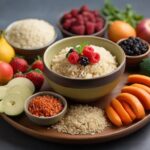
- Protein Sources in a Vegan Diet: What to Do?

- Vegetarianism for Beginners: Simple Steps to Adopt This Lifestyle

- Taste the Best of Africa: Top 5 Iconic Regional Recipes

- The Secrets of African Cuisine: Traditional Recipes and Flavors

- 10 Latin American Sweets: Tempting Dessert Adventures Await

- Secrets of Latin American Cuisine: Traditional and Authentic Recipes You Must Try

- Taste of the Mediterranean: 5 Key Dishes

- Simple Mediterranean Cooking for Beginners: Impress Your Guests!

- Homemade Sushi: Simple Steps to Prepare Your Favorite Rolls
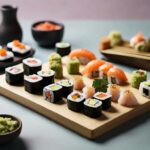
- Secrets of Asian Cuisine: Discovering 8 Traditional Techniques

- Innovation in Cuisine: Gourmet Products in Traditional Recipes
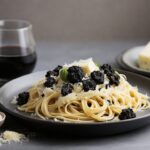
- The 10 Most Exclusive Gourmet Products You Must Try

- White Fish vs. Blue Fish: Which is Better for Your Health?

- The Secrets of Perfect Seafood Cooking: Kitchen Tricks

- How to Choose the Best Poultry for Your Recipes

- From Farm to Table: How to Select Quality Meat
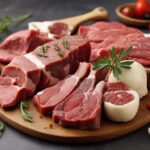
- Complete Guide: Enhance Your Dishes with Fresh Herbs

- Revealing the Superfood Potential of Red Fruits: Benefits & Recipes

- Starting Out in the Kitchen: Pro Chef Tips for Beginners

- Unlock Your Culinary Potential: Beginner’s Guide to Essential Techniques

- Culinary Secrets Unveiled: Elevate Your Cooking with Simple Ingredient Tricks

- Master Your Kitchen: 10 Unexpected Tips for Easy Cooking

- Art of Fruit and Vegetable Cutting: Expert Techniques Revealed

- Efficiency Unleashed: Explore the Art of Mise en Place

- Mastering Healthy Cooking: Unveiling 4 Low-Fat Secrets

- Complete Guide to Cooking Methods: Everything You Need to Know

- From Fusion to Tradition: 4 Global Gastronomic Trends

- Culinary Innovations: The Most Impactful Gastronomic Trends

- A Gastronomic Journey: Migratory Influences in the Cuisine

- Flavors of the World: A Journey Through Diverse Culinary Influences

- The Evolution of Food: Traditional vs. Modern Cuisine Compared

- The Great Masters of Cuisine: Contributions to its Evolution

- Spices Through Time: Understanding Their Historical Importance

- 5 Great Gastronomic Moments: Historic Milestones in the Cuisine


